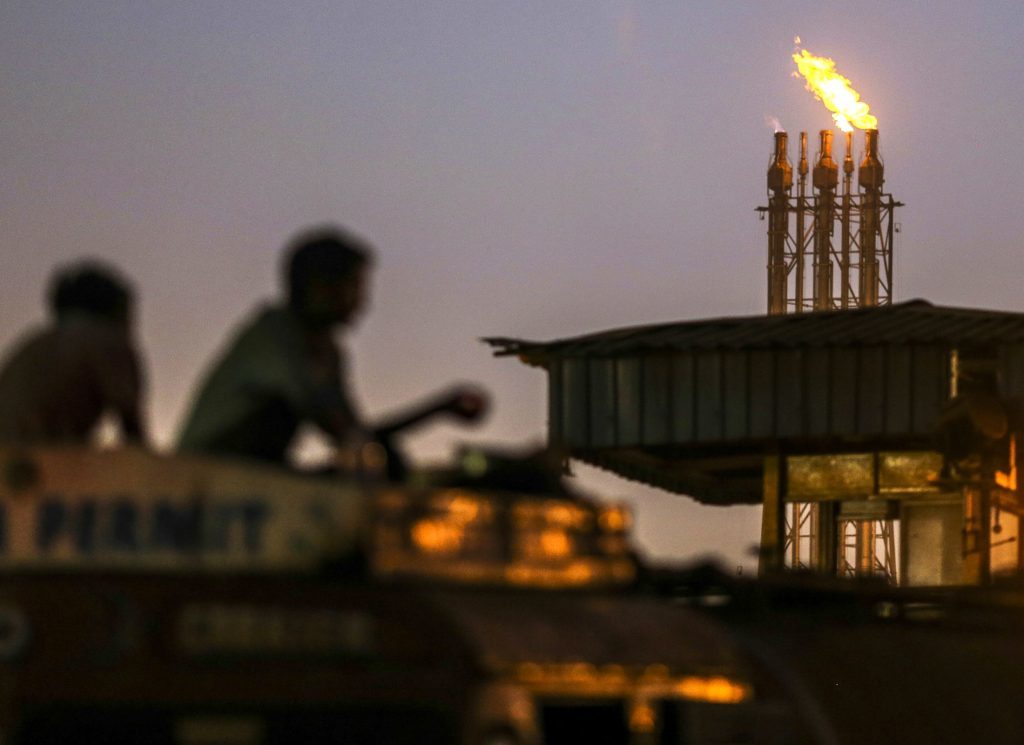
Uneasy lies the head that wears a crown in the world’s biggest oil market.
Middle East producers who for decades reigned as the undisputed leaders of oil sales to Asia are sensing a threat to their dominance, which is goading them to review age-old habits. Before the U.S. shale boom and the biggest price crash in a generation, buyers eager to feed their galloping economies had little choice but to purchase their supply even if terms weren’t desirable.
Refiners have long grumbled about Middle East producers providing pricing for long-term oil cargoes in a timeline that’s out of sync with when individual “spot” shipments are traded. That complicated policy makes it difficult to compare the relative costs of various crudes.
Now, easier access to cargoes in a world flooded with oil and the end of a ban on U.S. crude exports is giving buyers more of a say and forcing sellers to focus on customer needs. Competing supply from the Americas to Europe and Africa to countries such as China and India are eating into Middle Eastern producers’ market share, putting them on the defensive.
“Middle Eastern producers are getting more cognizant that there’s a lot of arbitrage supplies coming to Asia,” said John Driscoll, the chief strategist at JTD Energy Services Pte. “With increased competition for market share in Asia, Middle Eastern producers face pressure to review their marketing strategies and official selling prices and ensure that they’re buyer-friendly.”
A refiner now wanting to buy spot supply of Russian or African crude loading in March for delivery within a month will have access to its cost right away. Yet it won’t be able to make a comparison against Abu Dhabi oil because the emirate’s producer lets customers with long-term contracts know the cost for March cargoes only in April.
As for shipments from the U.S. and Europe’s North Sea that take almost two months to arrive, buyers will still be able to lock in prices sooner than they would be for long-term Middle East shipments.
The latest available pricing for Abu Dhabi and Qatar crude corresponds to December supply, while refiners are making purchases for March in the spot market. Other Middle East producers are also out of sync, with Saudi Arabia and Iran having only released February rates for their long-term shipments.
Abu Dhabi National Oil Co., OPEC producer United Arab Emirates’ state-run company, sought buyers’ feedback for its price-setting mechanism in December, a few months after Iraq surprised the market with its proposal for a new sales formula.
Comparing Prices
The company, known as Adnoc, asked on Dec. 11 if buyers preferred crude to be priced ahead of time, or retroactively. Customers were told to respond a day later. However, a month on, the producer has yet to provide a follow-up, according to four Asian refiners who replied to the feedback request.
“Under Adnoc’s current methodology, the three-month lag makes it difficult for buyers to make predictions for price comparisons with other grades,” said Nevyn Nah, an analyst at industry consultant Energy Aspects Ltd. “Forward pricing will be a step in the right direction for Adnoc, but change will not come easy for many Gulf producers with many layers of bureaucracy and hurdles to clear.”
Adnoc didn’t respond to an email seeking comment.
The Middle East is still the biggest supplier to most countries in Asia. When refineries were built years earlier, they were designed to process the region’s crude, meaning the plants now can’t shift significantly away.
Still, its once ironfisted grip on the Asian market is loosening. The change has been compounded by Middle East nations leading efforts by OPEC to curb output and shrink a glut. That’s made regional benchmark Dubai crude relatively stronger, while other markers such as U.S. West Texas Intermediate have weakened by comparison.
WTI was at a discount of $2.08 a barrel to Dubai crude, compared with a premium of 15 cents on average in December 2016, according to data compiled by Bloomberg.
For a story on the battle for market share in China, click here
To see how some Mideast producers are losing out in India, click here
“Buyers are no longer pure price-takers,” said JTD’s Driscoll, who has spent more than 30 years in the petroleum trading industry in Singapore. “Middle Eastern producers always played up the issue of supply security, but with Asia as the main demand growth center the region is not short of offers.”
Recommended for you
